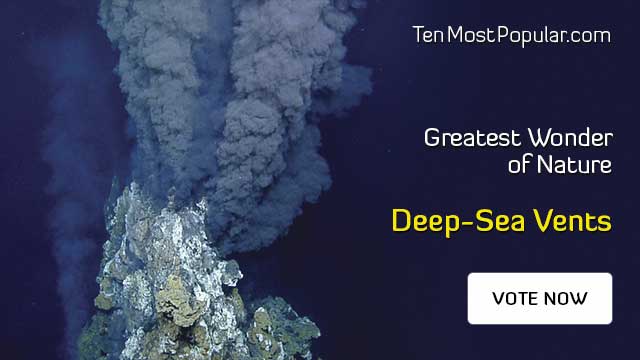Deep-Sea Vents (Hydrothermal Vent)
Hydrothermal vents are cracks on the surface of the planet that geothermal heat the waters. Hydrothermal ventilation is commonly found near volcanically active areas, areas where tectonic plates move. This feature is found in the middle back of the ocean(3000 meters deep) but some are in shallow seas. The range of hole temperatures ranges from 5-100°C, the emission of hot black smoke ranges from 250-400°C, while the temperature around the hole ranges from 8-35°C. Hydrothermal ventilation ecosystems have high productivity due to the chemosynthetic activity of bacteria that live symbiosis with Riftia pachyptila tube worms. Carbohydrates produced by bacteria function for animals to be able to live in extreme environments, Chemosynthesis is carried out using abundant available H2S from holes with chemical equations.
Hydrothermal ventilation is commonly found on earth because the earth is geologically quite active and the waters are above it. On land, hydrothermal ventilation can be in the form of fumaroles, hot springs and geysers. Under the sea, hydrothermal vents are commonly called black smoke. In most deep seas, the area around hydrothermal vents is biologically very fertile for the surrounding life and hosts various living things that use dissolved chemicals from these vents. Archaea chemosynthesis forms the basis of the food chain, supporting various organisms such as giant tube worms, shrimp, and shellfish.

